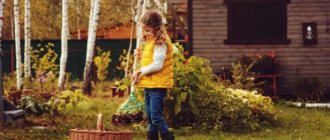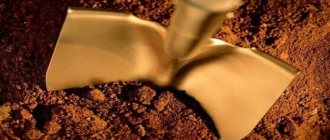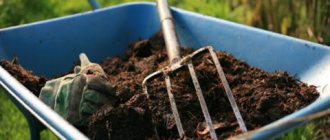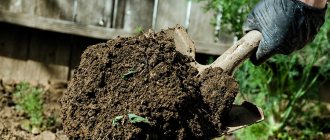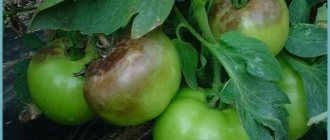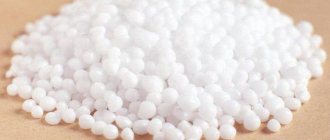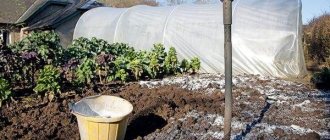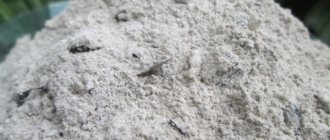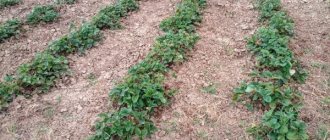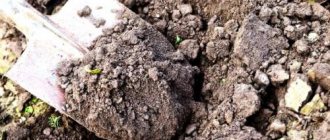Summer residents increasingly began to use mineral fertilizers to maintain soil fertility and generate high yields. But they provide only a short-term increase in yield, reducing the amount of humus in the soil. Organic fertilizers - waste from animals that feed on plant foods - are becoming a worthy substitute for chemical fertilizers. A prominent representative of such fertilizers is manure. When is it better to apply manure in the fall or spring? What plants like to be fertilized with manure?
Manure as fertilizer: types, composition, properties
Depending on the type of animal from which the waste is obtained, manure can be:
- horse;
- bovine;
- rabbit;
- avian;
- sheep;
- pork.
Each type of manure has its own composition and characteristics, and it also differs in the duration of its effect on the soil.
Pig manure is rarely used because it contains a large number of helminths. Cow dung is most effective. On light sandy soils, the effect of manure remains for 2-3 years, on heavy clay soils - 4-6 years.
Horse dung. It has a rich chemical composition. Suitable for use in greenhouses and open ground. Poultry manure (droppings) is the fastest-acting fertilizer. Convenient to use for fertilizing.
Beneficial properties of manure
Manure is based on animal excrement mixed with grass, straw, and sawdust. There are several categories of manure according to the degree of decay:
- Fresh manure. This is a thick fertilizer that easily holds its shape.
- Slurry. Slush is used most often. This is a nitrogen-potassium fertilizer suitable for fertilizing vegetable and garden crops. The slurry is diluted 1:5 and added after watering. Used when laying compost to moisten the soil.
- Semi-rotted manure. This is manure that has been lying in the open air for about six months. It crumbles easily in your hands. Used as a fertilizer for digging on depleted soil.
- Humus (rotted manure). Loose, completely bent loose mass. The most common fertilizer. Rotted manure contains a lot of nitrogen and nutrients, 2 times less than fresh manure.
You may be interested in: Chicken manure as fertilizer, methods of preparation and use
Proper autumn application of organic fertilizers to restore fertility
Good afternoon, dear friends, gardeners and gardeners! I welcome you to our “Country Stories” community.
The harvest is harvested, and it's time to take care of the soil, restore what it spent on growing vegetables, root crops, fruits and berries. Experienced summer residents never limit their autumn work to harvesting. It is in the fall that the success of the next year is laid.
Types of organic fertilizers
Every gardener knows that organic fertilizers are the best for the garden. However, not everyone has a deep understanding of this issue, equating manure with humus, and green manure with compost. There is a huge difference between them, both in the timing of application to the soil and in the vegetable crops under which they are applied.
First, let's divide all types of organic fertilizers into raw and processed. Raw organic matter includes fresh manure, unrotted compost, green manure, coarse organic matter (sawdust, bark, straw).
Recycled organic matter is considered to be something that has already been rotted. Manure that has been lying in a heap for more than a year becomes humus; its structure is more similar to earth than to manure. Compost, if it was formed correctly, after six months or a year it overheats and becomes like peat with small inclusions. Peat rotted hundreds of years before we were born, just like sapropel. Ash can also be classified as recycled organic matter, as well as chalk and dolomite flour.
https://vk.com/photo-159774511_457249164
When to add organic matter
Recycled organics are a “finished product.” It is ready to be processed by soil bacteria, which will convert it into minerals in a form accessible to plants. Ash, chalk and dolomite flour are, in fact, a set of minerals: potassium, calcium, phosphorus, magnesium. Recycled organic matter can be applied at any time of the year: autumn or spring. Peat, humus, and mature compost can be used to mulch the soil during the summer.
Fresh organic matter cannot immediately become food for earthworms or bacteria, much less for plants. Actually, plants do not feed on organic matter at all; they consume minerals that are formed after the processing of organic matter by living macro- and microorganisms.
It takes 3 to 6 months for fresh organic matter to rot. Until fresh organic matter is completely processed, it is not a source of nutrition for plants. Therefore, you should not add fresh organic matter during planting in the spring. Even with proper rotting processes, until everything is rotten, the plants will lack nutrients, despite the fact that you applied organic fertilizers.
The best time to add fresh organic matter is autumn. In different regions it has different duration. Somewhere already in October the ground freezes, and somewhere autumn lasts throughout October and November. But in any case, organic matter will be processed over the fall and winter. When fresh manure is added during autumn digging, the soil structure improves, it becomes more loose and breathable. It is also better to plant green manure in the fall; over the winter they rot, mineralize and become fertilizer for plants.
It is better to sow green manure immediately after each bed is cleared, so you will not waste time, because the growth of green manure requires at least a month of warmth. The deadline for planting each green manure crop can only be determined experimentally. For example, gardeners in the Chelyabinsk region prefer to sow oats in the fall rather than mustard. Tender mustard greens freeze during the first frost, while oats are more cold-resistant, especially if you cover the bed with spunbond.
On acidic soils, it is useful to carry out deacidification simultaneously with the addition of organic matter. In the fall, add ash or dolomite flour at the rate of 200 g per square meter, the volume being approximately a plastic sour cream cup with a capacity of 0.4 liters.
https://vk.com/photo-159774511_457249166
To dig or not to dig?
How to embed organic matter: to dig it up or not is a controversial question to which there is no single answer.
Dig.
Supporters of classical agriculture believe that organic matter and other fertilizers should be applied during digging. This method has its advantages. Fresh organic matter is evenly distributed in the upper layer of soil, mixes well with the soil, due to which it overheats faster, because there are a lot of microorganisms in the soil. During the digging process, the soil is loosened and saturated with oxygen, which is so necessary for beneficial bacteria.
In the fall, rough digging is done, after which the clods of earth do not break up. Thanks to this, the soil gains more moisture during the winter, because... snow and water accumulate in holes and hollows. If digging is carried out in late autumn, when the surface of the soil is slightly frozen, then the turnover of the layer leads to the death of many insect pests that have already settled in their “winter quarters”. After deep digging, they end up on the soil surface and freeze.
Don't dig.
Supporters of the “No-till” technology, i.e. “without digging”, they believe that the turnover of the layer disrupts the structure of the soil, which is a complex “layer cake”. The capillaries that are formed in the soil due to the roots of plants or green manure are disrupted, but air and water entered the soil through these passages.
It is believed that digging is also harmful to the life of microorganisms. Since some of them need oxygen (aerobic), while others do not (anaerobic), they live in different layers of soil. In the upper, looser layer, aerobic bacteria live, and below, in a denser layer, anaerobic bacteria live without access to air. The turnover of the soil layer changes their places, which is not useful for either one or the other.
Even fresh organic matter can be incorporated into the soil without digging, using soil rippers of various designs. Green manure can be sealed not by turning the layer, but only by lightly sprinkling it with earth; this is conveniently done with a flat cutter. It is enough to scatter rotted organic matter, for example, humus or mature compost, over the soil surface at the rate of 1 bucket per 1 sq.m and loosen it into the top layer.
https://vk.com/photo-159774511_457249165
Beneficial microorganisms
Proponents of digging and non-digging agree on one thing. In order for organic matter to be beneficial, it must be processed by soil microorganisms. And for this it is necessary that they be in the soil. In soil rich in humus, to which organic fertilizers are added annually, there is a rich and diverse biosystem. But on dense clay soils or light, poor sandy soils with microorganisms the situation is worse.
In any case, it will be useful to once again populate the soil with beneficial bacteria and fungi. There are many microbiological preparations for soil improvement, one is called: “Soil Improver”, the drugs “Baikal”, “Shine”, “Vostok”, “Ekomik” are popular. They contain a whole complex of various bacteria and fungi. Biological products are usually added at a rate of 1:100, i.e. 100 ml per 10 liters of water.
Biological products sometimes need activation if they do not contain live bacteria, but their spores, like many drugs with Bacillus subtilis, for example, Fitosporin. Preparations based on Trichoderma also need activation.
In order for bacterial and fungal spores to “wake up”, they need to be given time. To do this, dilute the mother liquor according to the instructions and leave to infuse for several hours. To speed up the activation process, you can add sugar and yeast to the solution at the rate of 300 g of sugar and 100 g of pressed yeast per 10 liters of warm water.
Since microorganisms need something to eat, the added organic matter will become food for them. In this case, it is advisable to keep the soil moist; this is ensured by rain in the fall. By treating fresh organic matter with microbiological preparations, you can be sure that it will rot and not rot. During the process of decay, pathogenic microflora multiply, which is not good.
Who needs and who needs organics?
Not all garden crops treat organic fertilizers equally. This must be taken into account both when sowing green manure in the fall and when adding fresh or rotted manure.
Fresh.
Only some crops enjoy large doses of organic matter. These are all plants of the pumpkin family: cucumbers, zucchini, pumpkins, watermelons, melons. You can apply fresh manure to these crops even in the spring, and if you apply it in the fall, the result will be magnificent.
Rotten.
Cabbage also consumes a lot of nitrogen and does well in rich, oily soil. But he prefers the autumn application of organic matter, fresh or rotted. Onions and garlic respond well to the autumn application of organic matter, but it must be well rotted.
Last year's.
But root vegetables do not like fresh organic matter. They produce many roots and shoots, grow ugly, and are more susceptible to diseases. This feature must be taken into account when preparing beds in the fall.
It is better to sow root crops in the same bed where cabbage or pumpkins were grown last year, of course, if organic fertilizers were applied to them. The same rule applies to potatoes.
https://vk.com/photo-159774511_457249163
Thank you for your interest in my article.
Humus as fertilizer: application
Humus is a source of humus entering the soil. This is a dark brown granular substance with the smell of soil. It is obtained through fermentation under the influence of microorganisms. Humic acids, humus and simpler mineral compounds are formed. Rotted manure is very light; about six kilograms fit in a 10-liter bucket. The more humus in the soil, the more fertile it is. In soddy-podzolic soils the amount of humus is about 60%, and in chernozem it is 80-90%.
Properties of humus
Why do you need to add fertilizer to the soil? Humus is necessary because:
- increases the ability to retain moisture;
- improves soil porosity;
- reduces the accumulation of heavy metals;
- increases plant resistance to diseases;
- improves the decorative properties of flower crops;
- enhances photosynthesis, helping to increase productivity;
- improves soil porosity.
How to prepare humus
How is manure processed into fertilizer? A place is allocated in the shade where the components will be stored. They fence it off so that the front wall is open. The components are laid in layers of 10 cm, alternating leaves, straw and fresh manure. Each layer is lightly sprayed with water or mullein solution. Cover the top with film to prevent moisture from entering.
It is necessary to leave some holes to allow air access. It is necessary to stir the mixture periodically and moisten it in hot weather. To speed up fermentation, you can use the components of the preparations “Siyanie-3”, “Baikal EM-1”, “Ekomik Harozhny”. Using the accelerated method, you can obtain fertilizer from manure for feeding in two months.
Application of humus
Gardeners very often use humus for:
- preparing soil mixtures for indoor flowers;
- preparing soil mixtures for seedlings;
- fertilizing and fertilizing various crops during the growing season;
- improving soil fertility.
Many novice gardeners and gardeners ask whether good humus or manure is better. Fresh manure can harm plants, burn the root system and leaves. Humus brings more benefits.
Stages of decomposition: fresh manure, semi-rotted, humus
Manure is considered fresh if it was stored no more than 6 months ago. During storage, it is turned over several times to ensure access to oxygen. During the caking process, manure releases a large amount of heat - it burns.
The temperature rises to 70 degrees and plant residues burn, turning into a homogeneous mass. Helminth larvae and eggs and weed seeds die under the influence of temperature. The fertilizer becomes safe for use.
But this happens a year later, after the manure is stacked and covered with a layer of peat to reduce the loss of volatile substances. Therefore, half-rotted substances are more expensive than fresh ones. It is called half-rotted manure.
Semi-rotted manure contains about 75% water, that is, it is loose and homogeneous in structure. Suitable for all plants and soils. The volume of half-rotted substance is 50% of the original amount.
Rotted excrement is 1.5 – 2 years old. After another six months, the substance turns into humus, the volume of which decreases three to four times, but this fraction is considered the most environmentally friendly and nutritious.
When is it better to apply manure to the soil in autumn or spring?
In the fall, summer residents are faced with the question of when to apply manure? If the soil on the site is sandy or sandy loam, then it is more advisable to apply manure in the spring. Manure is applied to heavy soil in the fall. For other types of soil, fertilization with manure is carried out in any season.
Organic substances added to the soil in spring begin to decompose and supply plants with nutrients. This is very important for plants, because in the spring and early summer season, plants require a lot of nutrients because they are actively growing.
You may be interested in: Seed husks as fertilizer, how to apply
Manure, which is applied in the fall, decomposes, the elements from it dissolve, entering the soil organomineral complex. It gradually decomposes, and next year the plants receive the necessary nutrition in full. The organic matter contained in manure is a source of substances involved in the formation of humus. Due to the lack of depletion by vegetative plants, most of the fertilizer goes into humus, helping to improve soil fertility. Those gardeners who want to lay the foundation for productivity for many years to come apply manure in the fall. On light soils, fertilizers are easily washed away by melt water and rain, so applying manure in the fall is undesirable. The nutrients simply won’t have time to reach the plants. To ensure that the manure prepared in the fall does not go to waste, it is better to compost it, putting it in a neat, even pile, placing it with other types of organic matter. Add dolomite flour to the mixture, mix, pour in water and cover with film. This will make excellent compost that can be used in the spring.
Autumn tillage for the prevention of diseases and pests
Loosening the top layer of soil
Immediately after harvesting plant debris, loosen the beds to a depth of 3-4 cm as early as possible to destroy the soil crust.
This needs to be done before it gets colder. Loosening encourages the germination of weed seeds. The more of them that have time to sprout by autumn, the better. After digging the soil in autumn, the seedlings will die, this will reduce the weeding work in the next season.
Autumn digging of soil
Is it necessary to dig up the soil in the fall?
- Autumn digging is not useful for all types of soil. On sandy crumbly soil it does not have a positive effect, but on heavy clay soil it is extremely useful.
- Digging improves the structure of clay soil. Pores, air voids, where oxygen penetrates, are formed in it. It is very important for root respiration and nutrient absorption by plants. With a lack of oxygen, nutrients become inaccessible to plants, and plant productivity decreases.
- Autumn digging of the soil reduces the infestation of the garden with pests and diseases. It destroys the passages and nests of pests, opening access to cold air. Lumps turned out to the surface freeze better, this contributes to their partial disinfection.
- Digging reduces the number of annual weeds. Small seedlings of weeds easily die after digging, which will make it easier for you to weed next season.
- Snow moisture is used rationally. More snow accumulates on the lumpy surface of the bed after digging. Moreover, when the snow melts, the water does not flow down the sides, but enters the pores and wells formed after digging and is absorbed deep into the soil. Thus, in the spring, garden vegetables can use reserves of biologically active snow moisture for growth.
Have time to complete the digging before the onset of prolonged rains: when the soil gets wet to a depth of 10 cm or more, you can no longer dig it up, since you will trample the soil and this will disrupt its structure. As a rule, experienced gardeners try to finish digging by the beginning of October.
Dig the beds to a depth of approximately 15-20 cm, turning the clumps over if possible so that the weed seedlings are at the bottom. There is no need to carefully break up the lumps and level the bed: snow and water will accumulate better on an uneven surface.
General rules for applying manure
There are universal rules that must be followed in order to prevent damage to plants, enrich the soil, and get a rich harvest:
- Fresh manure is not recommended to be applied to the soil, regardless of the crops grown and the type of soil. During its initial decomposition, a large amount of heat and gases are released, which damages the root system.
- Traditionally, rotted manure is used. Initially, manure contains nutrient chemicals in a bound state; during the process of decay and processing, microorganisms are released and acquire an easily digestible form. Use in this form is preferable as a top dressing.
- Do not allow manure to come into contact with young leaves, stems and shoots. They may burn out and burn out.
- It is necessary to allow time for the manure to rot, otherwise it will lose some of its nutritional value.
- If straw is included in the humus, the process of its decomposition slows down.
- At what depth should manure be applied? It all depends on the condition of the soil. After the fertilizers are spread, the soil is dug up. It should be taken into account that for light sandy soils, manure is applied approximately 20 cm (on the bayonet of a shovel). For heavy types of soil, it is recommended to apply manure no deeper than 12 cm.
- When calculating the dose of fertilizer correctly, you need to take into account the type of crop being grown, soil fertility, and frequency of application.
You may be interested in: Coffee grounds as fertilizer, use in the garden and at home
What's the best way to dig?
The method of autumn treatment depends on how much area needs to be dug. If we are talking about a small area, then you can loosen the soil in the fall using a plow or shovel. This method is called “manual” because it is performed without the use of mechanized equipment. The advantage of this treatment is that the fertile layer does not suffer serious damage, but plowing may not be effective enough and will take a lot of time and effort from the gardener.
If you choose a mechanical method for digging, you can dig up the soil in the garden in the fall with a walk-behind tractor with adjustable plowing depth. It is not recommended to turn the soil more than 25 cm. In this case, beneficial microorganisms may be damaged. Now there are small tractors with rotary plows that allow soil to be processed without destroying the lower layers.
Treatment of areas with trees
When answering the question of whether it is necessary to dig up a vegetable garden in the fall near trees, experts advise treating the soil carefully so as not to damage the small roots, which will later become seedlings-layers. This procedure is carried out no later than the end of September. It is not recommended to dig up the soil near bushes and trees to a depth of more than 15 cm, and after processing, you should fill the space with mulch or dry leaves so that the roots of the plants do not freeze in winter.
Source
Fertilizing apple trees with manure
Manure is used to feed trees in spring and autumn. Manure is rich in nitrogen, which trees need in the spring. It is better to apply liquid manure to the soil. To do this, fresh excrement is poured with water 1:3 and left for 2 weeks. The mass is stirred periodically. Before adding the solution to the soil, a liter of mullein is dissolved in a 10-liter bucket. You can prepare fertilizer from bird droppings. Before application, the mass is diluted 15 times.
Apple trees are fertilized in the fall with potassium and phosphorus fertilizers. Rotted manure is applied to great depths. Along the periphery of the crown, grooves are dug into which organic fertilizer is poured, superphosphate or ash is added, as well as potash fertilizers. Then the grooves are buried.
You can carry out spring and summer foliar feeding of apple trees with mullein solution. Take 500 ml of mullein for a 10-liter container and add a spoonful of urea. The solution is mixed and filtered.
Feeding with slurry
Slurry stands apart in the family of natural fertilizers. This is a “quick” fertilizer used during the growing season , and not before planting. The main elements of fertilizer are nitrogen and potassium.
Do not confuse slurry with mullein. Slurry is the liquid or semi-liquid part of manure, while mullein is an infusion prepared from fresh manure.
Slurry helps especially well during the period of intensive growth of tops and the formation of green mass. The fertilizer is used for almost any plant ; there are no serious restrictions on its use. During fruit setting, formation and ripening, fertilizing is reduced and then stopped altogether.
Slurry is not used in its pure form. It is diluted with water in a ratio of 1:5-7 and superphosphate is added (50-60 g for every 10 liters of solution). Fertilizer is applied between rows, in pre-prepared grooves to a depth of 10-15 cm and then covered with earth.
On average, slurry contains 0.3% nitrogen, 0.4% potassium, 0.1% phosphorus
Feeding berry bushes with manure
Berry bushes need regular fertilizing to produce a rich harvest every year. Fertilizing raspberries in the fall with organic fertilizers should be alternated with fertilizing with minerals. Only one type of fertilizer is applied each year. Autumn fertilizing is applied between the rows, then the soil is dug up.
Fertilizing currants in the fall includes up to three buckets of compost or humus for each bush. This fertilizing is supplemented with wood ash, phosphorus and potassium fertilizers. When applying fertilizers, they are mixed with fertile soil.
What fertilizers should be applied in the fall?
Throughout the year, plants need different ratios of nutrients. And if in the spring you need to choose complexes with a predominance of nitrogen necessary for growing green mass, then at the stage of flowering and fruiting plants need phosphorus and potassium more.
Autumn is that time of year when most of the harvest has already been harvested and sent for storage, and the perennials remaining in the ground need nutrients solely to survive the winter. Under no circumstances should winter crops have time to germinate. In addition, the soil requires restoration after giving all the necessary elements to gardening and flower crops.
That is why in the fall it is customary to add potassium to the soil for the most part, then phosphorus and, last but not least, nitrogen (that is, in decreasing order). It is not without reason that all complex autumn fertilizers contain increased amounts of phosphorus and potassium in an easily digestible and accessible form - just what the soil and plants need during this period. But why does autumn fertilizer still include nitrogen? The fact is that it acts as a catalyst, activating the “work” of other useful substances, including, in addition to phosphorus and potassium, also calcium, magnesium and molybdenum.
Fertilizing roses and other flowers with manure
Organic fertilizers are very important for flowers. Manure is called “black caviar for roses.” With proper feeding, the rose begins to bloom very beautifully. The best types of manure for a rose garden are cow and horse manure. Manure can also be used as mulch if it is spread over the soil surface in the spring. Manure will enrich the soil with humus and prevent the appearance of weeds. If there is not enough manure to provide a complete fertilizing, a solution is prepared from a small amount of manure. Liquid fertilizer for roses is a good nitrogen fertilizer.
Mullein is suitable for feeding any flower plants. It is diluted with water 1:4, left in a closed container for 3-4 days, then diluted again with water 1:15. Dahlias and peonies are fed with rotted cow or horse manure in the fall. To do this, a kilogram of manure is dissolved in a 10-liter bucket of water. After a day, add more water (1:2), and you can water the flower beds. manure
When to dig a garden in the fall
It is important to consider the timing in which the garden will be processed in the autumn. In different regions, the time when gardeners dig up their garden may vary slightly. After all the beds have been removed, the tops should be chopped, evenly distributed over the surface of the earth and plowed manually or mechanically. It is advisable to plan all work for mid-late autumn before severe frosts. Therefore, experienced gardeners answer positively the question: is it possible to dig the ground after covering.
How to properly dig up soil at your dacha in the fall
Cultivating land in a dacha is a difficult task if done manually. Mechanical digging of the site using a motorized bot or mini tractor significantly speeds up and facilitates this procedure. But in any case, there are practice-tested rules that ease the laboriousness of seasonal cultivation of fertile soil.
Basic rules for optimizing labor when digging soil in a dacha manually:
- the shovel must be correctly selected and of high quality: the handle is strong, impeccably smooth, so as not to injure or calluse your palms when digging; the blade of the bayonet should be as sharp as possible to make it easier to enter even a dense layer of soil;
- Digging, even with a shovel that is correctly selected for height and of high quality, must be done with gloves of the appropriate size for the hands, without rough internal seams, with rubberized palms so as not to slip along the handle of the shovel;
- Shoes for digging the earth with a shovel should be selected as closed as possible so that lumps of soil or pebbles do not fall in; the sole should be hard and thick in order to best protect the sensitive surface of the foot when pressing frequently on the shovel tray;
- The digger's clothing should be selected according to the weather to avoid overheating and sweating in the cold wind and to avoid catching a cold; It is better if these are trousers tucked into high boots or boots, and a jacket that does not hinder movement;
- The technique of digging with a shovel is quite simple, but it requires skill and adherence to some rational rules, failure to comply with which will lead to rapid fatigue and decreased productivity in this hard physical work:
- The shovel should be placed as vertically as possible to the ground with a bayonet. Holding the handle firmly with both hands, use your pushing foot to forcefully press on the shovel tray so that it enters the ground to a given depth - the entire bayonet or half.
- The vertical position of the shovel allows you to penetrate deeper into the soil and capture a larger layer of it.
- It is better to dig at an average pace, calculating the forces according to the area of digging in the summer cottage.
- Considering the laboriousness of digging the soil by hand, it is easier to dig bed after bed, taking comfort in the noticeable results of the work.
Digging up soil at your dacha in the fall is a labor-intensive task, but useful in all respects. All the above rules are designed more for beginners than for experienced gardeners, who, of course, have developed their own techniques and rules for a complete program of comfortable, safe and effective work on the soil of their favorite plot.
